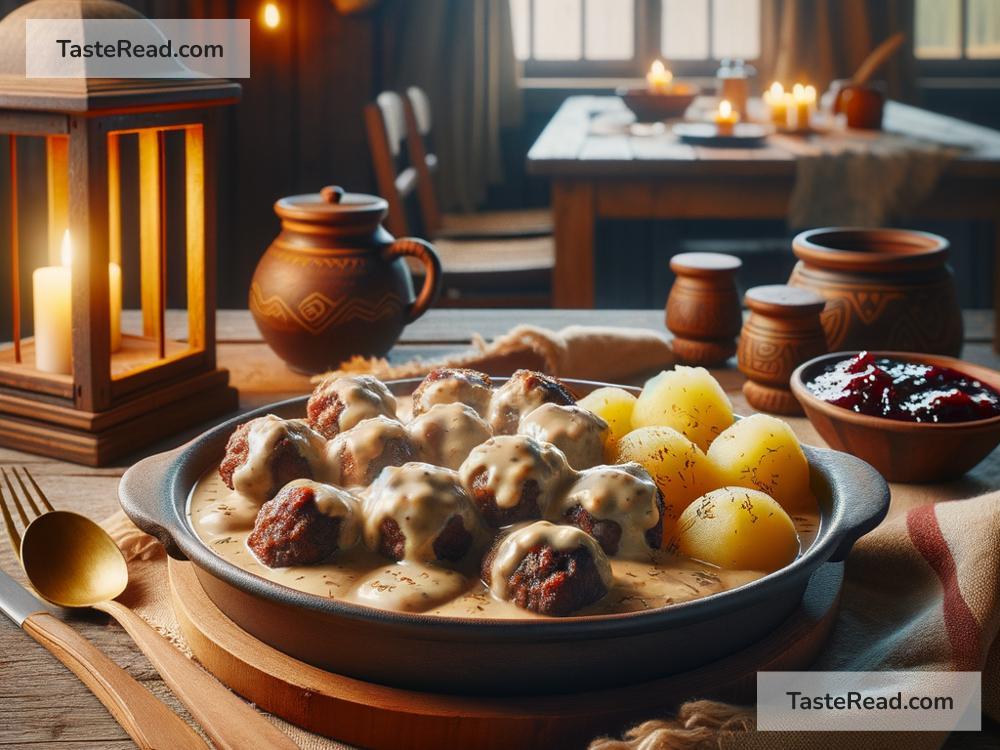The History of Swedish Meatballs
Swedish meatballs, or “köttbullar” as they’re known in Swedish, are one of Sweden’s most iconic dishes. You’ve probably seen them served at IKEA, smothered in creamy gravy and paired with lingonberry jam. But where did these tasty little meatballs come from? Let’s take a journey through time to uncover the history of Swedish meatballs.
Meatballs Around the World
Meatballs aren’t unique to Sweden—they’ve been part of human diets for centuries and can be found in many cultures. Italians have their classic meatballs with spaghetti, Turks have “köfte,” and Chinese cuisine includes “lion’s head” meatballs. The concept of rolling ground meat with spices originated long before Sweden adopted its own version of meatballs. What makes Swedish meatballs unique is the way they’re prepared, served, and, of course, the flavors.
The Turkish Connection
Surprisingly, Swedish meatballs may not be entirely Swedish! There’s a popular theory that they were inspired by Turkish cuisine. In the early 18th century, King Charles XII of Sweden spent several years in the Ottoman Empire, modern-day Turkey, after losing a major battle during the Great Northern War. While in Turkey, Charles became familiar with Turkish foods, including spiced meat dishes like köfte.
When Charles returned to Sweden in 1715, he brought elements of Turkish cuisine with him, including the idea of seasoned, ground meat rolled into balls. Over time, the Swedes adapted this concept, using local ingredients to craft a dish that reflected their own traditions. And so, Swedish meatballs began their journey to becoming a national favorite.
Home-Cooked Favorite
By the 18th and 19th centuries, meatballs had become a common dish in Swedish households. They were typically made from ground beef, pork, or a mixture of both, combined with breadcrumbs, onions, and seasonings. The meatballs were often fried in butter and served with potatoes, gravy, and lingonberry jam.
Swedish meatballs became a perfect example of “husmanskost,” which refers to simple, home-style cooking in Sweden. Husmanskost is all about hearty, comforting meals made with everyday ingredients—and Swedish meatballs fit the bill perfectly.
International Fame
For many years, Swedish meatballs were a dish enjoyed primarily in Sweden. But in the mid-20th century, things began to change. Swedes who emigrated to the United States and other countries introduced the dish to their new neighbors. Cookbooks featuring Scandinavian recipes also helped spread the popularity of Swedish meatballs. In the later part of the 20th century, Swedish meatballs became even more famous, thanks to IKEA.
IKEA’s Role
It’s no exaggeration to say IKEA played a major role in popularizing Swedish meatballs worldwide. IKEA is a Swedish furniture company, but it’s also famous for its in-store restaurants. Starting in the 1980s, IKEA began offering Swedish meatballs as part of its menu at stores around the world.
Their meatballs were served in the traditional way—smothered in creamy gravy and accompanied by potatoes and lingonberry jam. Shoppers could even buy frozen Swedish meatballs to take home and cook themselves. For many people outside Sweden, trying Swedish meatballs at IKEA became their first introduction to this iconic dish.
What Makes Swedish Meatballs Special?
So what sets Swedish meatballs apart from other kinds of meatballs? It’s all about the details. Swedish meatballs often have a softer texture compared to other meatballs because of the use of breadcrumbs and milk in the mixture. The seasonings, such as allspice or nutmeg, give them a warm, subtle flavor.
The creamy gravy, made from beef or chicken stock and often mixed with cream, is another key element. It’s rich and smooth, complementing the meatballs perfectly. Lingonberry jam adds a sweet-tart contrast that balances the savory flavors of the dish. Altogether, Swedish meatballs create a blend of flavors and textures that’s hard to resist.
A Staple of Swedish Culture
Today, Swedish meatballs are a treasured part of Swedish food culture. Whether enjoyed during a family dinner, at a festive holiday gathering, or as a treat at IKEA, köttbullar represent comfort and tradition. They are a reminder of Sweden’s ability to take inspiration from other cultures and turn it into something uniquely their own.
The Legacy Lives On
As Swedish meatballs continue to grow in popularity, they’ve evolved in small ways. Modern recipes sometimes swap out meat for plant-based alternatives or use different spices for a twist on the classic flavor. However, the heart of the dish remains the same—flavorful meatballs, creamy gravy, and a dollop of lingonberry jam.
So next time you enjoy a plate of Swedish meatballs, think about the long journey they’ve taken, from Turkish-inspired beginnings to the plates of diners around the world. Swedish meatballs are more than just food—they are a delicious piece of history that connects Sweden with the rest of the world.
And honestly, isn’t that what great food is all about?


